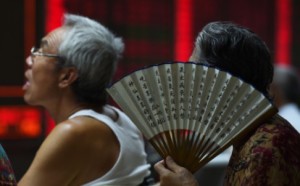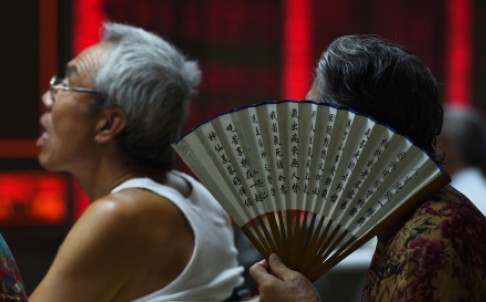Tough times in mainland stock market following precedent in Taiwan
Tsering Namgyal, South China Morning Post | July 26, 2015
Tsering Namgyal says efforts by the Taiwanese authorities that drew more long-term, institutional investors into play – a ‘gradualist’ approach to liberalisation – in the end helped to stabilise the market
For someone who has been following the Asian economic and financial markets for a long time, the recent market crashes in China evoke a sense of déjà vu.
The Chinese stock market today seems a replica of its Taiwanese counterpart two decades ago. Taiwan had been growing at the rate of 7-8 per cent in gross domestic product at the time, pretty close to the mainland’s growth rate now.
Common to both are the high proportion of retail investors, the widespread use of non-bank financing, and the rush into the stock market. The recent coverage of the Chinese rout could have been straight out of the Taiwanese newspapers of the ’80s and ’90s.
Fortunes were made and lost in a matter of days, and share prices defied gravity and fundamentals. For instance, during one of those years, one Taipei bank sold at a price-to-earnings ratio of 358. On some days, trading on the Taiwanese stock exchange exceeded the combined trading volume of the Tokyo and New York stock exchanges, according to a book on the Taiwanese bubble.

And just as the central government moved to intervene in the stock market, the Taiwanese government used various means to soothe the nerves of investors, including by encouraging government pension funds to buy certain blue-chip shares, something quite unheard of in the developed markets.
Yet, in the long run, what helped the Taiwanese stock market become more stable were not the daily government interventions but the work done by authorities in creating the right conditions for a healthier development of the capital markets. One of the most successful schemes was Taipei’s “gradualist” approach of deregulating the financial markets using its widely admired Qualified Foreign Institutional Investor scheme – just as China did decades later. The decision led to more foreigners owning shares, albeit at a measured pace.
Though heavily criticised for swimming against the current of the mainstream “IMF-World-Bank-Washington consensus” of that time, the regime was credited with keeping Taiwan out of the Asian crisis of 1997-98.
Unlike those in other countries, Taiwanese regulatory authorities had the mechanisms in place to avoid such knee-jerk reactions from investors when the markets began to collapse. Such a system helped attract less opportunistic and more long-term investors into the markets, leading to a higher ratio of institutional participation in the markets. Retail investors also moved away from speculating in the markets themselves towards professionally run mutual fund products and exchange-traded funds. All of this helped make the stock market less susceptible to boom-bust cycles.
Chinese stock markets will remain volatile as long as retail investors continue to dominate the market as they bet in the markets with their savings.
The recent Hong Kong-China Stock Connect and the Hong Kong mutual fund recognition schemes, however, should provide mainland investors with more options to diversify their investments by letting them directly invest in the more reasonably priced Hong Kong H-shares and also give them access to a wide variety of funds distributed in Hong Kong by international fund managers.
But whether it will attract “shoppers” to the capital markets remains to be seen. The Taiwanese example, however, presages that eventually the mom-and-pop investors will move over into more sophisticated investment products.
And when that happens, China’s stock market will also stabilise, but I would bet that it would take at least 10 to 15 years.
Tsering Namgyal is a Hong Kong-based correspondent for IPE International Publishers in London


